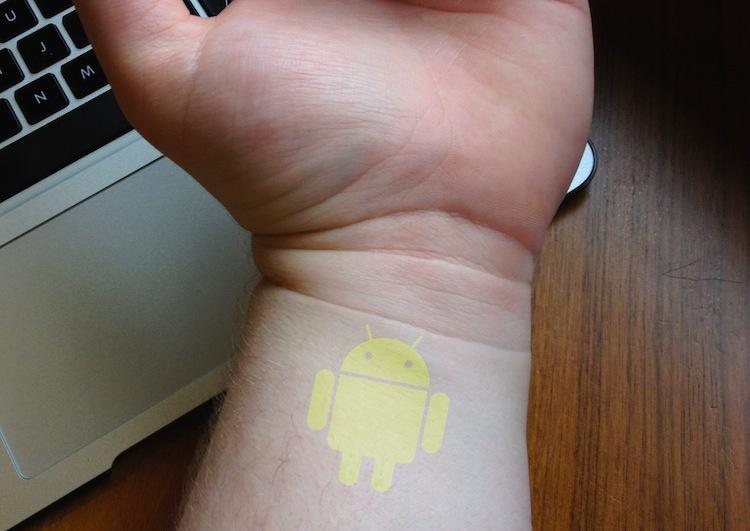
The science fiction TV shows and books of our youth usually have a strong influence of what we imagine when we think about the future of technology. And, oddly enough, a lot of those Star Trek and other once-outlandish items have become commonplace in the 21st century. Flip phones, tablets and even Bluetooth-like headsets, for instance, first made their appearances on Star Trek in the 1960s. Nearly a half-century later, all of those items are common household items – with the exception of the flip phone, which has come and gone and has been superseded by the more functional smartphone.
But now that the futuristic devices of yesteryear are already here and pretty well refined, we are once again looking to the moon, stars, other sci-fi shows and our favorite OEMs for what's next. In reality, the best place to look for things like this are usually trade shows or patent filings.
This year at CES, we saw all sorts of new gadgets. But the big thing for 2012 was wearable devices. Motorola and Kopin Co. showed off the Golden-i, a fully-functional "mobile PC" that is worn on the head and has an adjustable single-eye display. And a handful of companies brought their smart watches and other connected accessories to show off to the world in Las Vegas.
An based on some growing rumors, both the Apple and Google R&D departments have been working around the clock to bring some futuristic technology to life, like other wearable computing that gets a little more up-close and personal. Word has it now that Google is working on a pair of glasses that double as a smartphone with a Terminator-style HUD. And we haven't the slightest clue what Apple is working on, but it's a safe bet that it will branch off of seamlessly connect with one (or all) of their iDevices. According to some sources, the endgame here is to have connected clothing that gives real time health or fitness status or even connected contact lenses that double as a wireless display for your smartphone.
And then there's Nokia. Nokia's R&D has been all over the place of late with flexible, kinetic devices, HumanForm (which completely changes the smartphone as we know it today) and insane camera technology crammed into a smartphone. But the strangest out of all of the aforementioned future tech is one that Nokia has filed a patent for just days ago: a haptic tattoo.
The idea here is that someone will get a tattoo with (demagnetized) ferromagnetic ink. After the tattoo is finished, it would need to be magnetized again by an external magnet. This tattoo would have the ability to be paired with a phone and would then vibrate, much like your phone now does, when you get a new notification on your phone. The phone, on the other hand, would emit magnetic fields. Depending on the magnetic field emitted, the wearer of the tattoo could detect what exactly is happening on the phone or even who is contacting them without looking at the phone.
There is also mention of a less permanent option in Nokia's patent, which is essentially a magnetic patch that you would stick on your skin, much like a sticker or bandage. This patch would act just as the tattoo would, but the obvious benefit is the ability to remove it at will.
Personally, as creepy and bizarre as all of this is, I think it's quite clever. The vibrate function of smartphones is currently meant to be discrete. However, I can hear my phone vibrate several rooms away, depending on what it's resting on or whether it has a case on it, etc. This technology would actually make the vibrate function completely silent. However, I don't understand how a a phone that emits a magnetic field can be "paired" with ferromagnetic ink. How would a new text message on your phone not make the ferromagnetic tramp stamp on the lower back of the guy sitting next to you go haywire?
I've never been the kind to care about tattoos. I don't hate them, but I've never had the desire to get one myself. However, in the name of science (or nerdism, in this case), I may be inclined to try this out if it ever came to fruition. Though, I would probably have to keep it to a white-ink tattoo (it would blend in quite nicely with my milky white skin).
I know I miss a lot of notifications when I have my phone on vibrate in my pocket. So I understand where Nokia is coming from. But a patch and tattoo seem to be a little … off. All of this can be done with something like a bracelet, which would work like the patch, but would be reusable.
What say you, ladies and gents? Would you ink your body for cell phone notifications? Or would you prefer the less permanent option? Better yet, does the standard vibrate function of a cell phone work for you just fine?